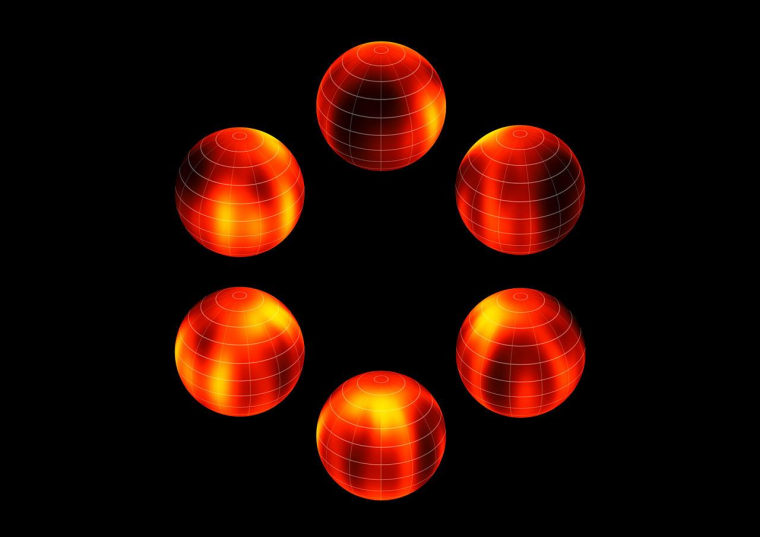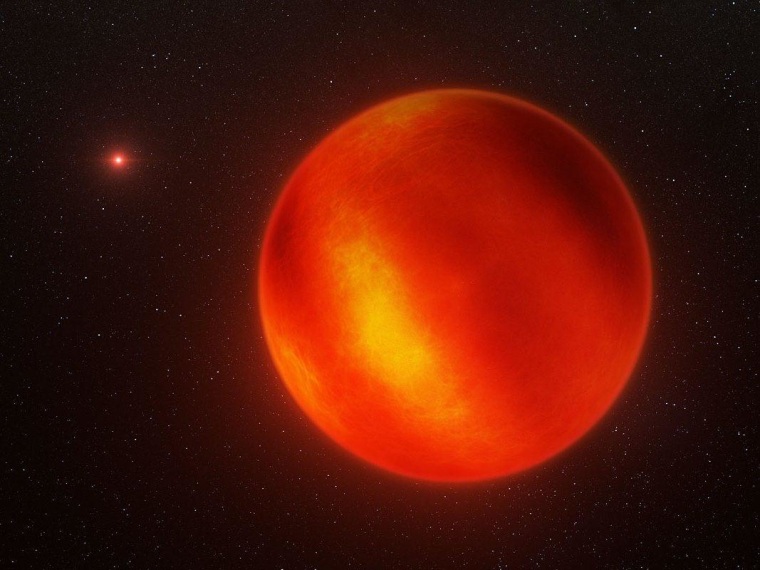Scientists have created the first weather map of a space oddity known as a brown dwarf, revealing a rare glimpse at alien weather patterns on the failed, wannabe star.
The map shows the weather on the surface of WISE J104915.57-531906.1B (called Luhman 16B for short). It's just 6.5 light-years away, which makes it the closest known brown dwarf. Scientists mapped the light and dark features of the failed star's surface, according to officials with the European Southern Observatory, whose Very Large Telescope in Chile contributed to the new science. You can take a video tour of the brown dwarf and its weather map on Space.com.
Brown dwarfs are called failed stars because they are larger than giant planets like Jupiter, yet too small to produce nuclear fusion like a true star.
"Previous observations have inferred that brown dwarfs have mottled surfaces, but now we can start to directly map them," Ian Crossfield of the Max Planck Institute for Astronomy said in a statement. "What we see is presumably patchy cloud cover, somewhat like we see on Jupiter."
Crossfield and his team found that Luhman 16B probably harbors gaseous clouds made of iron and other minerals in a mostly hydrogen atmosphere. The brown dwarf rotates fully about every four hours. Weather on the brown dwarf would not be favorable for humans. Temperatures soar to about 2,000 degrees Fahrenheit (1,100 degrees Celsius).
Luhman 16B is one of a pair of brown dwarfs in the southern constellation Vela. Its brighter counterpart is known as Luhman 16A. In another study, scientists were able to dissect what is happening in different atmospheric layers on both brown dwarfs. The surface-mapping results appear in the journal Nature, and the atmospheric layer results are in Astrophysical Journal Letters.

— Miriam Kramer, Space.com
This is a condensed version of a report from Space.com. Read the full report. Follow Miriam Kramer on Twitter and Google+. Follow Space.com on Twitter, Facebook and Google+.
